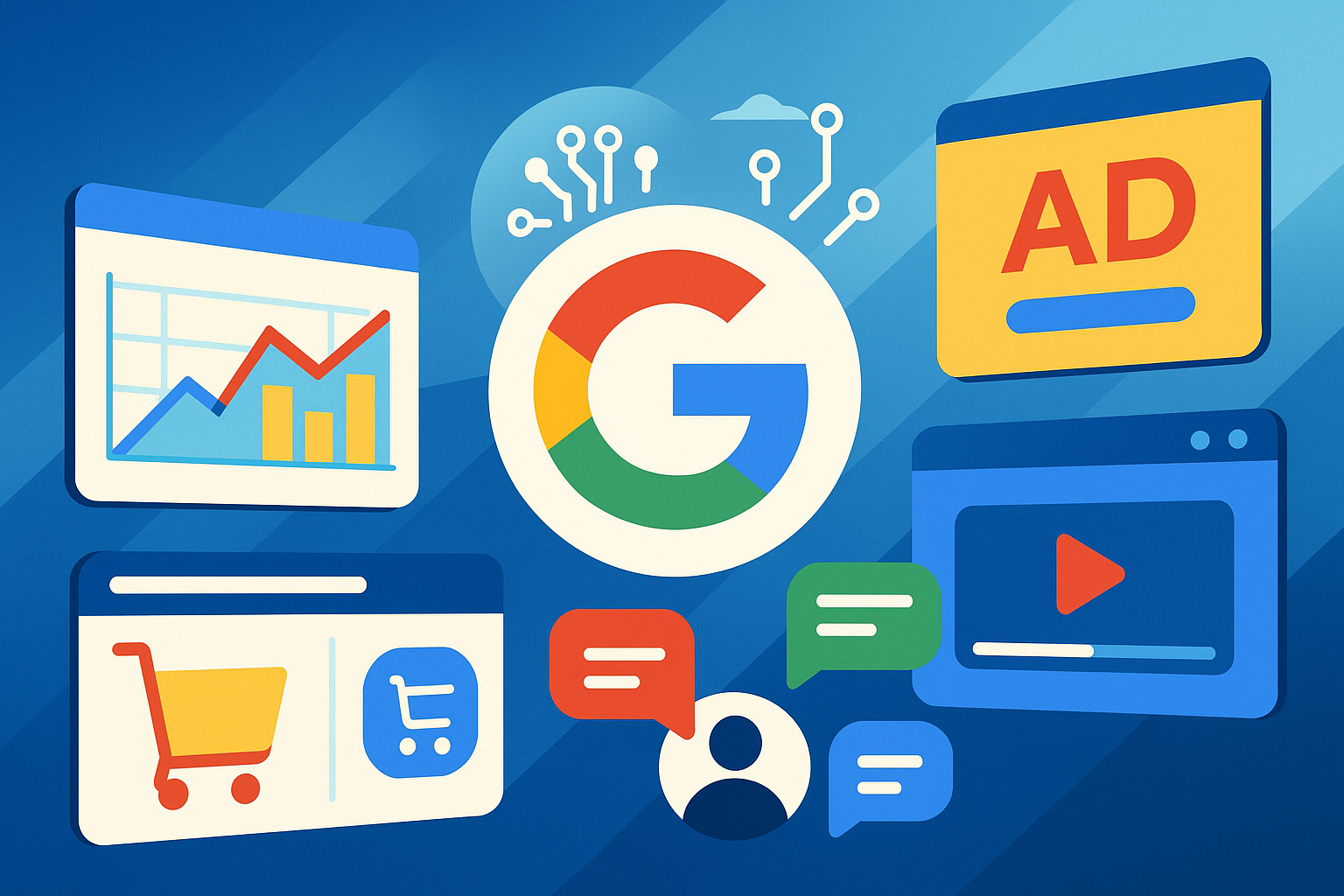Google just unveiled a major overhaul of its advertising platforms at Google Marketing Live 2025 on May 21. The tech giant introduced over thirty new AI-powered features that will change how ads work across their products. Most significantly, ads will now appear directly within AI-generated answer summaries in Google Search, not just in traditional search results. This means when someone searches for information like “how to bring small dogs on flights,” they might see an ad for dog carriers embedded right in the AI-generated answer.
Key Takeaways
- Google is integrating ads into AI Overviews and its new AI Mode for Search, making advertising part of the information discovery process
- Shopping features received major upgrades including personalized style recommendations, virtual try-on technology with full-body image uploads, and shoppable video ads on YouTube
AI Takes Center Stage in Advertising
AI is everywhere in Google’s new vision. The company introduced what they’re calling the “Power Pack” – a bundle of AI-powered campaign solutions for search, video, apps, creative work, and measurement. These tools aim to automate marketing processes at unprecedented scale.
The changes are massive. Ads won’t just appear alongside content anymore. They’ll be woven into it. This creates a shorter path between seeing an ad and making a purchase. It’s like having a salesperson who knows exactly what you need before you even ask.
Shopping Gets a Personal Makeover
Google’s Shopping Graph is now the engine behind a more personalized shopping experience. It refreshes billions of product listings hourly, ensuring users see the most current information. Got fashion preferences? The system remembers them.
Users in the U.S. can now rate styles with simple thumbs up/down or by swiping, immediately receiving tailored recommendations. These preferences stick around for future searches too.
Perhaps most impressive is Google’s virtual try-on technology. Users can upload full-body images to see how clothes might look on them before buying. It’s shopping from your couch, minus the uncertainty of fit and style. Returns could drop significantly with this feature.
Video Shopping and Data-Driven Optimization
YouTube is joining the shopping revolution. New shoppable video ads on YouTube Masthead and Discovery campaigns let viewers purchase products directly from videos they’re watching. See it, like it, buy it. Simple.
For merchants and advertisers, Google Merchant Center will soon offer A/B testing for product titles. This means sellers can experiment with different product descriptions to see which ones perform best. Data will guide optimization rather than guesswork.
The marketing community seems both excited and cautious. These tools promise greater reach and efficiency. Yet they also require adapting to a system where algorithms have more control than ever before.
Success in this new landscape will depend on clean data and understanding how people search. Marketers who can navigate these AI systems effectively will have a significant advantage. The rest might find themselves struggling to keep up as the distance between seeing an ad and making a purchase continues to shrink.


